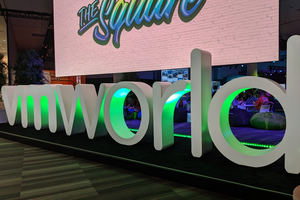VMware Returns To Its Roots At VMworld 2019

This year's VMworld was a return to form for VMware. By returning to its roots, VMware is building a strong foundation for future growth.
The show was about IT infrastructure operations and the operators who run it. While announcements regarding Kubernetes (also Kubernetes, and Kubernetes, did you hear us say Kubernetes?) and the Pivotal and Carbon Black acquisitions were important, the overall theme for the show was about the ecosystem surrounding VMware, which is all about IT infrastructure and the people who run it.
This is significant and, in my view, the right move. VMware is not a developer-centric company. VMware is IT infrastructure, and it is operated by people who care about infrastructure.
The past few years had seen VMware attempting to talk directly to developers, especially the cloud-native folks who have driven the growth of cloud, and that of Kubernetes. VMware rightly perceived cloud-native as a threat to its own growth, and needed to act, but in my view it went too far and, in the process, alienated its core audience of IT operators.
Far too many people bought entirely into AWS' message of “public cloud is the One True Way, and thou shalt have no other clouds before me” which we've seen doesn't pan out in reality. There's just too much inertia in enterprises with massive existing investments in working systems that it just doesn't make financial sense to rewrite for cloud.
It should be obvious by now that many applications won't get rewritten to run in containers, just as many mainframe apps remain, as do client-server apps. Successful companies need these apps to keep running, and the risk and cost of a full rewrite is rarely worth the effort for any individual app, let alone the full suite.
Instead, some apps will simply reach the end of their useful life and be turned off, replaced by new apps that absorb some of their function, or when the need for that functionality simply goes away. We see the same thing with technology in every other aspect of human endeavour, so it would be genuinely surprising for software not to follow this pattern, and I've seen no evidence that it doesn't.
VMware was hit with a classic straddling problem: by trying to simultaneously appeal to two different groups of people, each with quite different needs and desires, neither group felt well served. In fact, the original group—infrastructure operators—felt neglected as attention shifted to the new group of developers.
But VMware did learn to embrace cloud, rather than fight against it. VMware has now chosen to extend itself, by including Kubernetes into its core vSphere product with Project Pacific, and adding a suite of tools to operate in a more cloud-native way with Tanzu. Cloud isn't a location, it's a state of mind, a way of operating, and this year's VMworld indicates to me that VMware finally understands that.
This approach makes sense for the kind of company VMware is. VMware provides products to IT operators who build the infrastructure that supports developers. In a purely public-cloud world, such tools wouldn't exist, but now that we know that the world will contain a multitude of infrastructure types and deployment locations, including public cloud, private cloud, and the edge, VMware can have confidence that it has a role to play.
There remains some risk here, as Project Pacific presents two distinct APIs: the traditional vSphere one that VMware operators are used to, and a new Kubernetes one for the cloud-native people. But I think this is manageable, in the same way that VMware operators have come to understand storage (via vSAN) and networking (with NSX), at least to a certain degree. In my experience, storage people have learned to understand VMware, just as they learned to understand the servers and networks that connected to storage. Network people also learned to understand VMware, just as they learned something about all of the systems and applications that flowed across their networks.
I'm pretty bullish on VMware as a result. VMware can concentrate on doing what it does best and adopt whatever developers ultimately decide is what they want to run their code on. VMware admins can then confidently deploy known-good infrastructure for the developers to use, hopefully in a similar way to what they use elsewhere. Enterprises can add some Kubernetes and cloud operations to their existing stack at a pace that suits them, which is always going to be slower than those building from scratch on the latest shiny tech.
It's important to keep the golden rule of IT in mind: enterprise has the gold, and whoever has the gold makes the rules.
